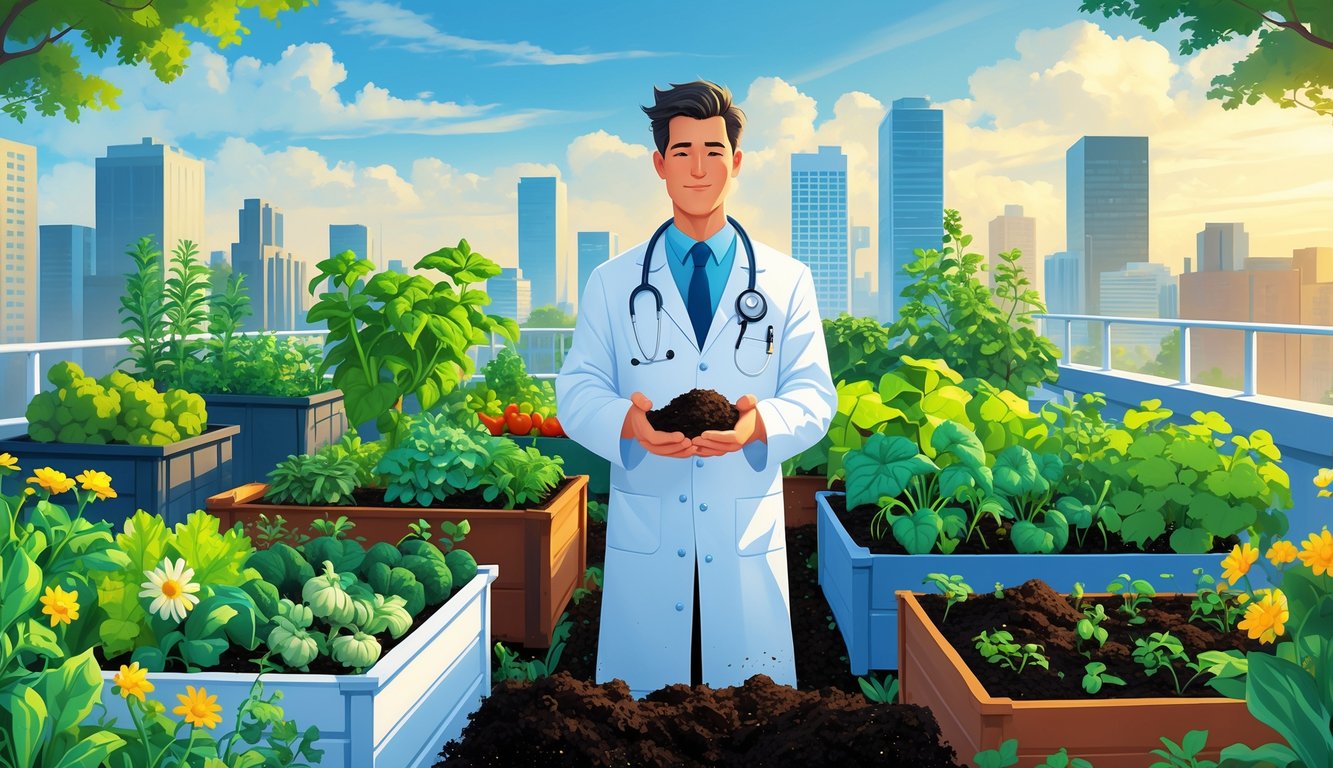
What’s Actually In These Mixes, Anyway?

Spoiler: dumping random dirt in a pot does nothing. The real difference—like, whether your spinach is yellow or your tomatoes taste like, well, tomatoes—comes down to what’s actually in the mix. Hardware store promises mean nothing.
The Real Nutrients (Not the “Vitamin-Boosted” Hype)
Let’s be honest, plants don’t care about “vitamin-boosted” labels. They need the basics—nitrogen, phosphorus, potassium, sure, but also calcium, magnesium, sulfur, iron, boron, manganese, zinc, copper. I heard from a Rutgers prof that city soils are always low on magnesium and iron. I checked—my kale looked exhausted, and yeah, that was why.
City dirt usually tests low on micronutrients thanks to runoff and construction. Dumping more fertilizer? You’ll burn the roots. I use a cheap digital soil meter for N-P-K. If leaves go yellow but nitrogen’s fine, it’s probably iron or magnesium, so out come the Epsom salts or chelated iron. Forget “balanced” feeds—just fix what your urban soil’s missing. That’s how I finally got peppers to fruit.
Organic vs. Inorganic: The Real Mix
Here’s what really gets me: everyone says “add compost, done.” Nope. Pure compost gets swampy. Roots drown. City gardens especially—compacted by feet, trash cans, whatever—need at least 10–20% perlite or sand.
I throw in biochar or vermiculite sometimes, but bagged “organic matter” is never enough. Every extension agent in NYC says it: you can have super “rich” soil and still get sad roots if there’s clay or builder’s junk underneath. Inorganic stuff—like the good commercial mixes—helps drainage. I aim for 60% organic (compost, worm castings), 40% inorganic (perlite, sand, grit). Except, honestly, who measures? When my tomatoes started wilting, it was just because I skipped the sand.
Results? Sort of. Here’s What Actually Happened
Spinach bolts every June, no matter what, but tomatoes—suddenly bushier, greener, where there was just dirt and disappointment last month. The results are everywhere, but nothing’s ever perfect. You’re promised “healthy crops,” and then—surprise—actual food, not just leaves. My neighbor, a literal hospital doctor, is more skeptical than me, but even he admits his kale survived the last heat wave without wilting. He says it’s the soil. I don’t know, maybe.
Yields and Health: Real or Just Hype?
This year, instead of the usual limp harvest, the “doctor-approved” mixes I tried actually did something. My peppers? Fourteen per plant. Last year? Maybe two. The label promised “greater productivity”—I rolled my eyes, but, okay, it happened. Not a miracle, but a real, measurable bump. Makes you want to start doing math on your grocery bills.
Studies from the US and Europe say 20% yield bumps with targeted amendments, especially phosphorus-calcium blends. The weird part? You end up with too much produce and no warning about kitchen overload. Reviews say the new mixes help with disease resistance, and yeah, plants look less sad, but don’t expect miracles—raccoons still eat your tomatoes.
Visible Differences in Growth Rate
Doctors and gardeners—both love to argue, don’t they? My doctor, over dinner, glanced at my lettuce haul and just blurted, “Is that thing normal for May?” I mean, I can’t ignore it. The plants basically double in size before I’ve even finished my coffee, roots shoving right past where last year’s batch stalled out. I tossed in some weird lab-concocted mix (so much vermiculite, barely any peat—does that matter?), and suddenly everything’s popping leaves like it’s on a dare. Kind of annoying, honestly.
I got bored and started snapping daily pics with my phone, then charted out bean growth—two inches a day. Seriously. Way faster than last year, and that’s with barely any rain. I found this Frontiers case study that swears better soil gives you fatter roots and more chlorophyll. Maybe that’s why my kale finally looks supermarket-level green. Oh, and my basil? Didn’t bolt, even when I forgot to water it for two days straight. Now my meal plans are wrecked because I have to use up all this basil. Typical.